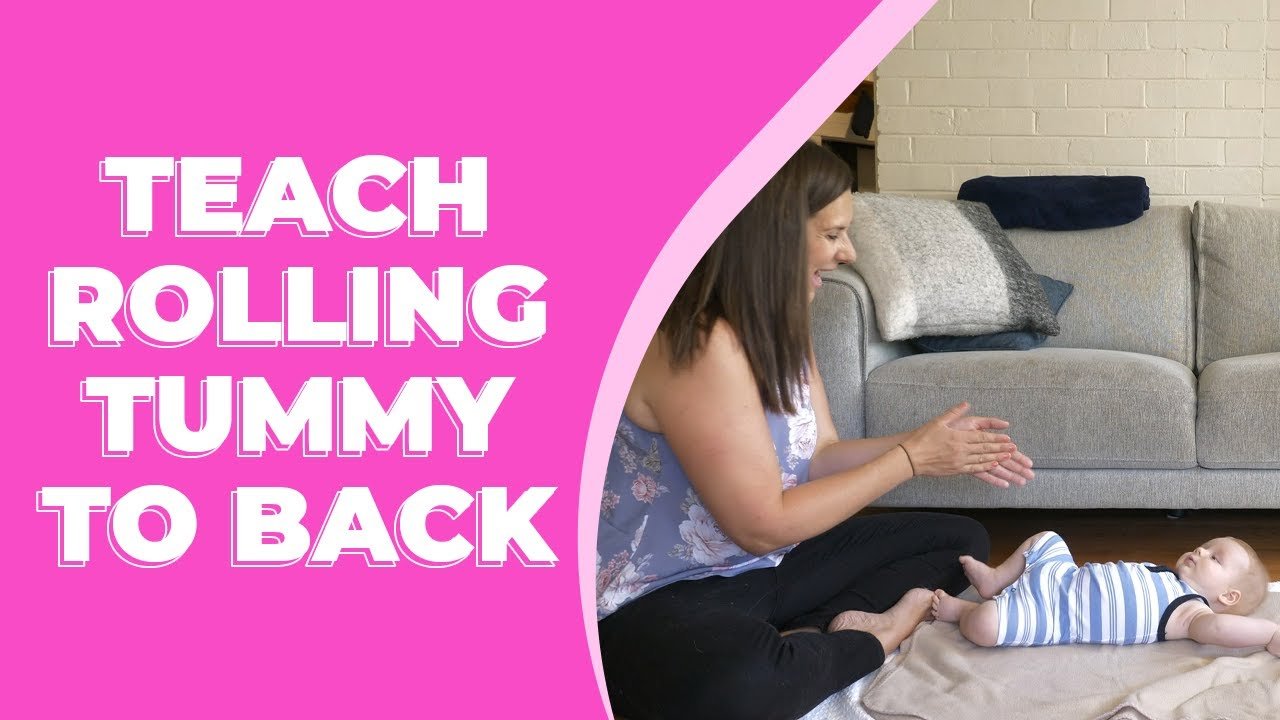As an occupational therapist, you are in the perfect position to learn valuable tips from Emma Hubbard on helping babies learn to roll from tummy to back. Emma shares five key tips, such as focusing on tummy time, encouraging weight shifting, and limiting baby equipment use, to aid in your baby’s development. By following Emma’s advice, you can help your little one achieve this important milestone in their growth journey.
If you’re curious about when babies typically start rolling over or looking for practical guidance on how to assist them in this process, Emma Hubbard’s video is a valuable resource for you. Through Emma’s expertise, you’ll gain insight into the developmental timeline of rolling from tummy to back and receive expert tips on how to effectively support your baby in reaching this milestone. By incorporating Emma’s strategies into your routine, you can actively contribute to your baby’s physical development and overall well-being.

Introduction
As an occupational therapist specializing in child development, Emma Hubbard shares valuable tips on how to assist babies in learning to roll from their tummy to their back. This article will delve into the typical timeline for babies to start rolling over and provide key strategies to aid in this crucial developmental milestone.
When Do Babies Start Rolling?
Understanding the timeframe babies typically begin rolling over is essential for parents to support and encourage their child’s motor skills development. Babies may exhibit involuntary rolling movements as early as four weeks of age due to their top-heavy nature. Purposeful rolling, where babies actively perform the movement, can occur between four to seven months of age.
Key Tips for Teaching Baby to Roll Over
Focus on Tummy Time
Encouraging plenty of tummy time for your baby is vital in strengthening their back, neck muscles, and developing head control. Tummy time provides a foundation for the muscles needed for rolling over, making it a crucial aspect of a baby’s development.
Helping Baby Roll from Tummy to Back
Assisting your baby in transitioning from tummy to back can familiarize them with the movement and motor pattern required for rolling. Providing support as they make this transition ensures their safety and allows them to practice the action in a controlled environment.
Encouraging Weight Shifting
Encouraging your baby to shift their weight while on their tummy can help initiate the rolling movement. Placing toys strategically to motivate reaching and grabbing can prompt weight shifting, leading to the natural progression of rolling over.
Using Baby’s Vision
Utilizing visual stimuli, such as toys or objects, can attract your baby’s attention and motivate them to complete the rolling movement. Moving objects in their line of sight can encourage them to follow with their head, assisting them in rolling from tummy to back.
Limiting Baby Equipment Use
Reducing the time spent in baby equipment, like swings or bouncers, and encouraging exploration and movement on a flat surface can enhance rolling practice. While these tools may provide convenience, ensuring ample floor time for muscle development is crucial for rolling proficiency.
Focus on Tummy Time
Tummy time plays a significant role in developing the muscles required for rolling over. By strengthening their back and neck muscles during tummy time, babies build the foundation necessary for successful rolling movements. Exploring various techniques to make tummy time engaging and comfortable for your baby can enhance their motor skills development.
Helping Baby Roll from Tummy to Back
Techniques to assist your baby in rolling from tummy to back include supporting them during the transition and guiding them through the movement in a safe manner. Creating a secure environment for rolling practice and ensuring your baby feels comfortable and confident can optimize their learning process.
Encouraging Weight Shifting
Encouraging your baby to shift their weight while on their tummy can facilitate the rolling movement. By promoting activities that prompt weight shifting, such as reaching for toys, you can help your baby develop the necessary skills to initiate and complete the rolling action.
Using Baby’s Vision
Utilizing your baby’s vision as a motivator for rolling can be an effective strategy. By strategically placing toys or objects to capture their attention and encourage head movements, you can guide your baby through the rolling process and strengthen their visual-motor coordination.
Limiting Baby Equipment Use
Understanding the importance of reducing reliance on baby equipment for extended periods can promote healthy motor development. While these tools may offer convenience, encouraging floor time for rolling practice can build essential muscles and skills needed for successful rolling from tummy to back.
Subscribe for More Parenting Tips
Parents are encouraged to subscribe to Emma Hubbard’s channel for additional advice and guidance on child development. By accessing valuable resources and expert tips, parents can enhance their understanding of their child’s milestones and support their growth effectively.
Conclusion
In conclusion, implementing strategies such as tummy time, guiding baby’s rolling movements, promoting weight shifting, utilizing visual stimuli, and minimizing baby equipment use can significantly aid babies in learning to roll from their tummy to their back. By fostering a nurturing environment and engaging in purposeful activities, parents can facilitate their child’s motor skills development and celebrate their achievements along the way.

